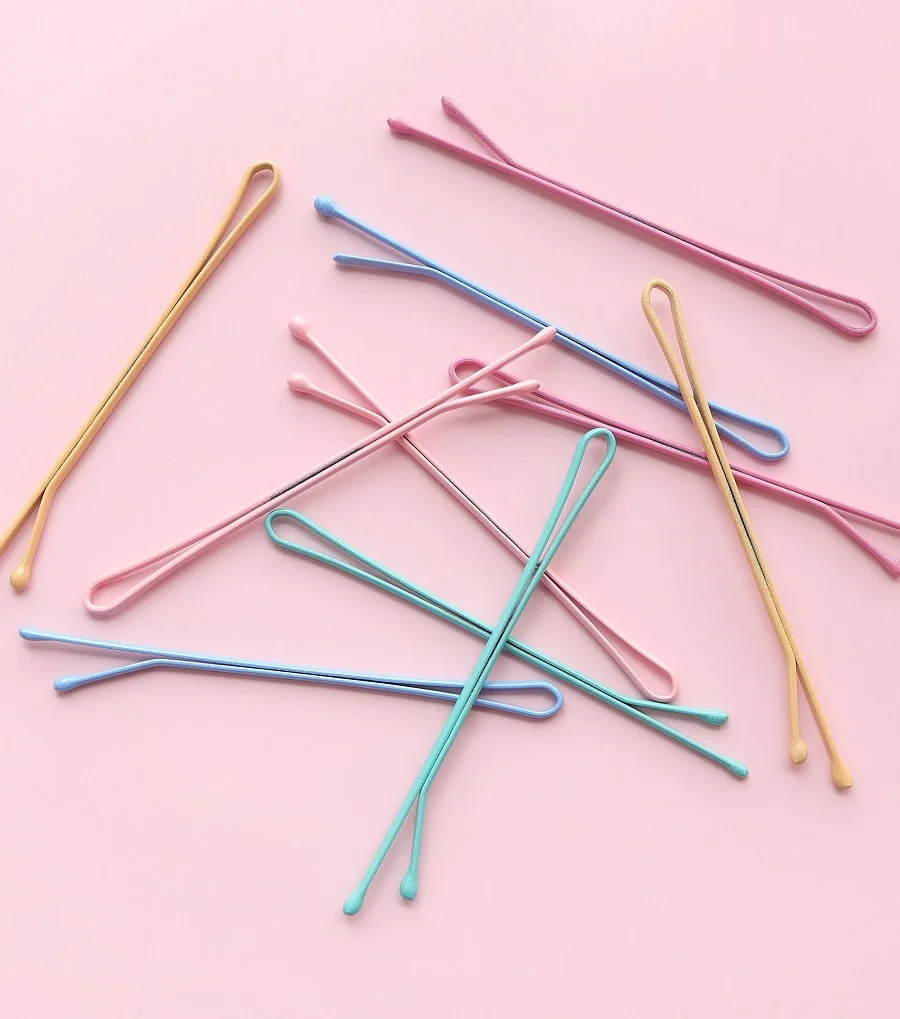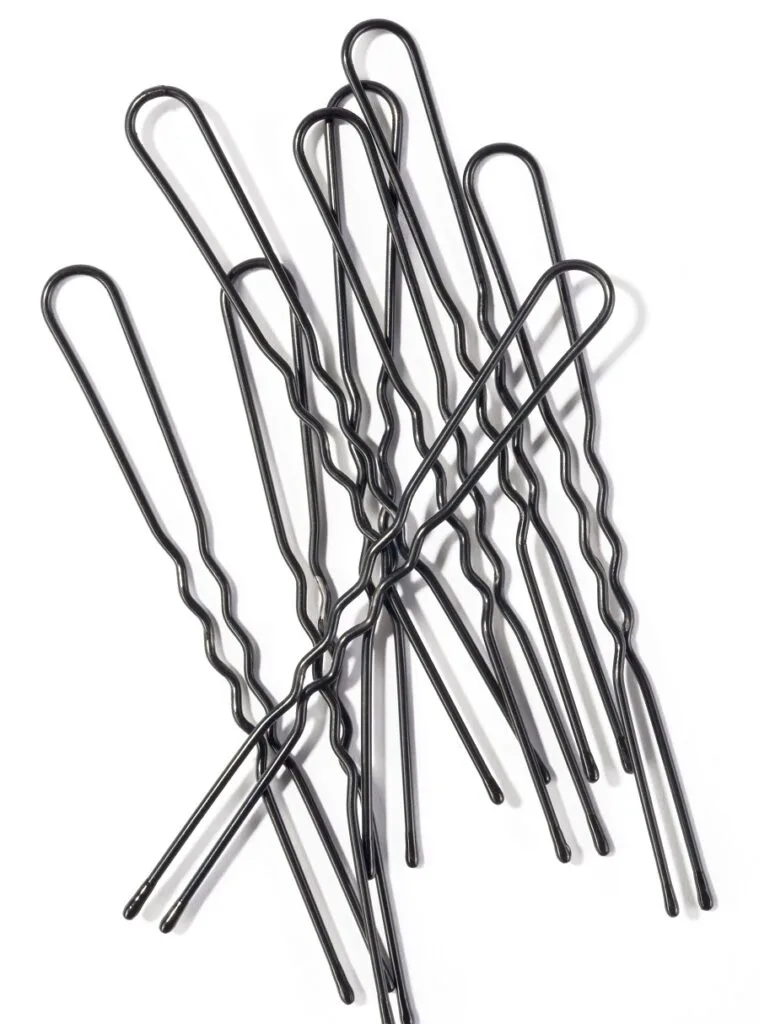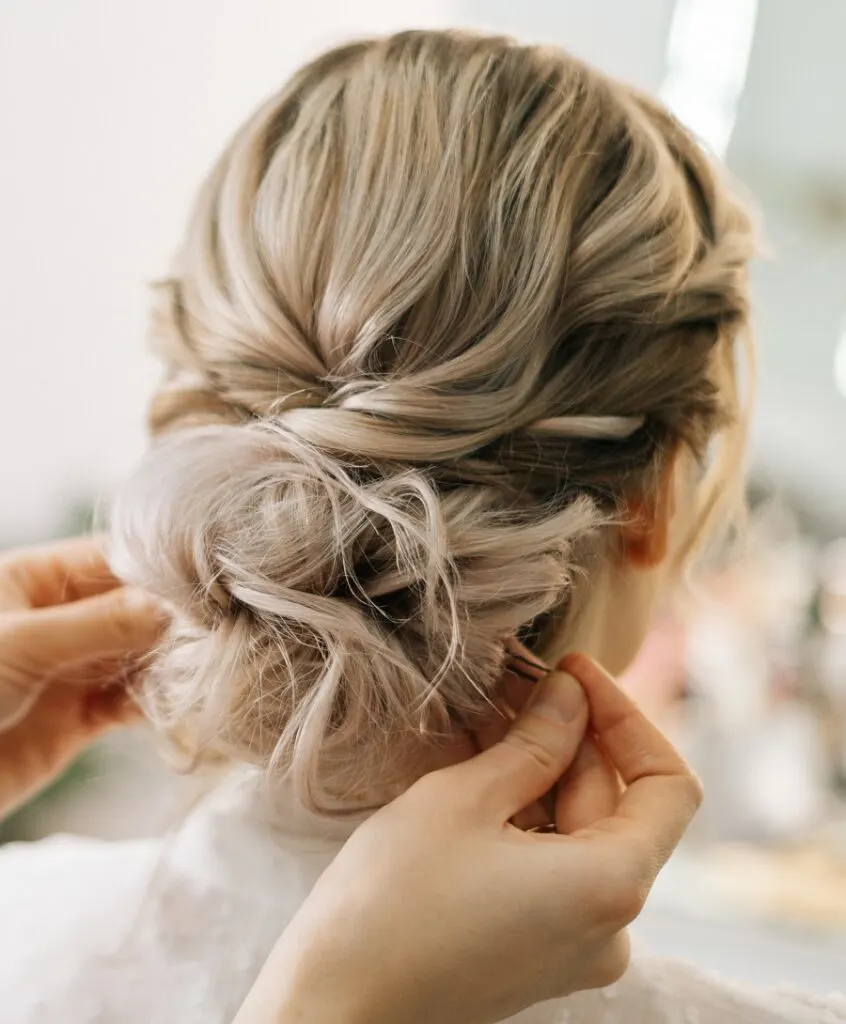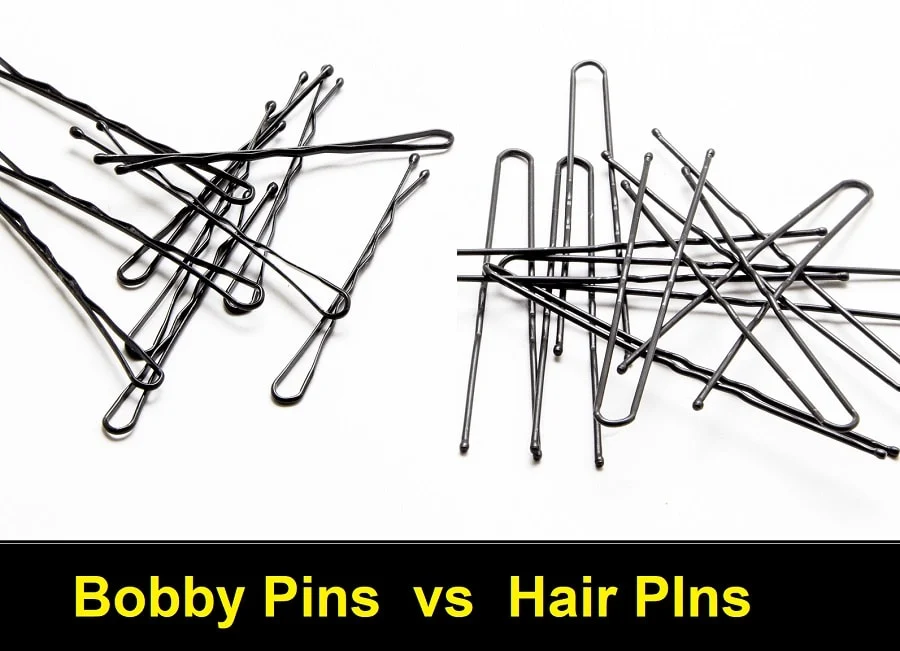One thing you’re sure to find on every woman’s dressing table, regardless of her age, is a huge pile of bobby pins and hair pins amongst other hair accessories.
That’s reasonable too as it is almost impossible to create any kind of hairstyle without using these tiny little hair graspers. But these two types are not the same and so are their uses.
Surprised? Well, don’t be as we’ve done a thorough bobby pin vs. hair pin comparison below to help you know when to use which. We’ve also included the correct usage of these hair accessories to avoid any further scalp scratching and hairstyle unraveling in the future!
Bobby Pins

A bobby pin is a type of hair clip that is rigid and can resist bending, with two legs firmly clasped together to secure small sections of hair. Most pins have a silicone, rubber, or plastic coating for better grip, smooth insertion, and rust protection.
Rumor has it that the bobby pin got its name from the bob hairstyle, which was popular among the flappers. Our English neighbors fondly call them hair grips or Kirby grips.
The bobby pin actually has different parts, despite how tiny and simple they look. There are four, to be exact:
- The blade is the straight side of a bobby pin.
- The ridge is the wavy side of a bobby pin.
- The eye is the loop at the closed end of a bobby pin that holds the bulk of hair.
- The balls are the rounded or teardrop-shaped tips of a bobby pin. They help the pin slide smoothly and protect the scalp from getting scratched.
If you’ve pried your bobby pins open too many times to the point where they won’t grip anymore, toss them.
Also, discard your pins if they’re missing their balled tips. Exposed tips have sharp points that can dig into your scalp and snag on your strands.
Reasons to Use Bobby Pins

Bobby pins are not only used for styling the hair. There are several other reasons for using bobby pins such as:
- Keep bangs or fringes away from your face
- Tame flyaway strands
- Create volume at the crown of your head by teasing and pinning sections of hair
- Secure decorative accessories like flowers, barrettes, tiaras, or headpieces
- Add texture to your hair
- Fashion elaborate hairstyles or hair patterns
- Fake shorter hair, like bob or lob
How to Use Bobby Pins Correctly
For a tiny piece of wire, you might think bobby pins are the most uncomplicated hair tools to use. But how often have you found your hair coming undone because your bobby pins slipped out?
First, let’s settle the age-old debate: which side of the bobby pin should face the scalp?
Many stylists will tell you that you should place the ridge-side down if you want your hair snug the whole day. It secures a tighter grip when you position them that way.
Others believe the grooves should face up to make the bobby pin glide smoothly and stay as flush as possible with your scalp.
The verdict? Well, it all depends on how much hold you want and what type of hairstyle you aim for. It’s your call, really.
Now, here are some handy tips to save you from readjusting your bobby pins every fifteen minutes:
- Use multiple bobby pins to hold more elaborate hairstyles. Criss-crossing them provides added support and guarantees your hairstyle remains intact all day.
- If you have fine hair, opt for smaller sections to ensure your bobby pins stay in place.
- If you have thick hair, consider using thicker and stronger bobby pins designed to handle the weight of your locks.
- Fine hair benefits from standard-size bobby pins, while coarser hair pairs well with jumbo bobby pins.
- For added grip, spritz hairspray on the pins to make them tacky before putting them on.
- Tucking your bobby pins away is a matter of choice. You can hide them or put them on display; it’s all up to you.
Hair Pins

Hair pins are wiry accessories that you can use to keep the hair in place. They look like a narrow U and come in varying sizes and thicknesses. The sides can be straight, wavy, or a combination of both.
Some are stiff and unbendable, while others are soft and pliable. Not to mention, hair pins can be plain or decorative.
Reasons to Use Hair Pins

Below are the most common uses of hair pins:
- Creating various hairstyles, including twists, buns, updos, and chignons
- As hair embellishments
- Attaching chunky hair accessories
- As a base for making personalized DIY hair accessories
How to Use Hair Pins Correctly
You can create better-looking ‘dos with hair pins following these tips:
- Choose a larger pin if you have thick hair that requires more hold, and go for a smaller one if your hair is finer.
- For gravity-defying hairstyles like sleek updos or buns, opt for a more substantial and weightier hairpin.
- Choose the softer, bendable hair pins for looser hairstyles.
- Apply volume powder or texture spray to your hair pins for enhanced hold.
- Twist the hairpin into the hair to prevent it from sliding out.
Bobby Pins Vs. Hair Pins: When to Use One Over the Other?

Bobby pins are best for securing flyaway hair and keeping sleek ‘dos. They also work well for styling smaller sections of hair like two-strand twists or pin up hairstyles.
Hair pins, on the other hand, are ideal for putting large chunks of hair in place. They’re best for buns or updos.
In many cases, you can use bobby pins and hair pins together to achieve a hairstyle. For example, you might need both for a dreamy pin up bridal hairstyle. You can secure the base of a chignon with bobby pins, then use hair pins to add loose plaits or twirls.
Experiment with both types of pins to find the best combination of hold and movement for your specific hairstyle.
Key Points
- Hair pins are notably larger than bobby pins because they’re intended for holding larger chunks of hair.
- The prongs of hair pins form a distinct U-shape, while those of bobby pins clamp together tightly.
- Bobby pins are usually made of metal, whereas hair pins are available in metal or plastic.
- Hair pins are open and offer more comfort when worn, unlike tight bobby pins that often pinch or pull on hair.
Bobby pins and hair pins have subtle differences, but it’s best to have both in your beauty arsenal. And lastly, feel free to mix and match to craft that perfect look!
